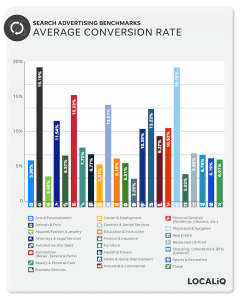Companies are facing a skills-gap crisis that college alone can’t fix
Finding skilled workers to meet the needs of emerging industries such as AI and green energy requires new ways of thinking about old ideas.
BY Byron Auguste and Euan Blair
With emerging industries—from AI to semiconductors to clean energy—rapidly spurring “good jobs” and workforce development investments, we have a once-in-a-generation opportunity to build new American industries and the skilled workforce for workers of all ages and all stages along with it.
The bad news? Today’s strategies around poaching what is commonly misunderstood as “qualified talent” is a zero-sum game, and there’s no way to meet the scale of emerging skills needs through college alone.
The good news: We don’t have to.
While half of the U.S. workforce does not have a bachelor’s degree, they are skilled through alternative routes (STARs). In fact, 30 million STARs already have the skills for roles with at least 50% higher salaries than their current jobs, but many are blocked from upward mobility. One promising pathway for STARs to access good jobs is apprenticeships—which allow workers to earn and learn at the same time, debt-free.
Recent research released by the Burning Glass Institute and Multiverse reveals apprenticeships could move 830,000 people into higher-wage roles, resulting in $28.5 billion more in earnings annually—providing huge boosts to business productivity and to the wider economy through pathways that are built for all workers at all stages in their career and educational journey.
The opportunity is there, and employers are now realizing that apprenticeships are necessary for emerging in-demand occupations. That includes those that are relatively new to the labor market, like cybersecurity or data analyst, according to analysis by Opportunity@Work and Lightcast.
While the apprenticeship model has been used by the trades for centuries across the globe, its expansion into new industries has seen success. IBM launched its “New Collar” program in 2017 and has since expanded to more than 33 registered apprenticeship roles from cybersecurity to data science. Since then, more smart companies have realized they need to “tear the paper ceiling,” and invest in apprenticeship pathways.
For the U.S. to create a thriving apprenticeship ecosystem, it is vital that the private sector and public sector work together—and thankfully we’re seeing strides at the federal and state levels already. This year, President Biden signed an executive order that aims to make the federal government “a model for the use and promotion of skills-based hiring, such as the use of Registered Apprenticeships, which reduces barriers to employment and attracts a diverse workforce to meet our Nation’s critical needs.”
At a state level, 33 U.S. states already offer tax credits for hiring apprentices and tuition support for registered apprentices. One shining example is in Illinois, where Governor J.B. Pritzker created a tax credit worth up to $5,000 per apprentice and has already seen a positive return on investment with a 13.2% increase in registered apprentices in the state—almost double the national growth of 7% in the same time period.
The opportunity, demand, and proven success for apprenticeships exist. So what’s missing? Investments that can scale.

At present, federal, state, and city governments throw nearly $500 billion per year into college initiatives, while spending less than $400 million on apprenticeships, a 1,000:1 ratio, says Apprentice Nation author Ryan Craig. This questionable investment strategy, in which more and more people are thrust into situations where they take on crushing student debt, comes while proposals that could “yield $10.6 billion in net benefits to U.S. taxpayers”—a 270% return on investment—remain dormant.
Given that proposals around degree removal requirements and apprenticeship hiring are widely popular across red, blue, and Independent voters, this shouldn’t be a hard issue for bipartisan support in the nation’s capital and across state houses countrywide. This year, the National Governors Association launched a community of practice with 22 states to share skills-based hiring best practices, challenges, and lessons learned.
And with a relatively small number of people with relevant experience for in-demand roles, apprenticeships’ applied learning on-the-job training model through reskilling, upskilling, and early-career talent programs are not only ideal, but necessary for workers and employers alike.
To get millions more workers into the middle class and close those pressing skills gaps plaguing employers today, policymakers must continue to find more efficient and effective ways to scale apprenticeships rather than chase after the misguided notion that bachelor’s degrees alone can solve our talent needs.
ABOUT THE AUTHORS
(5)
Report Post





